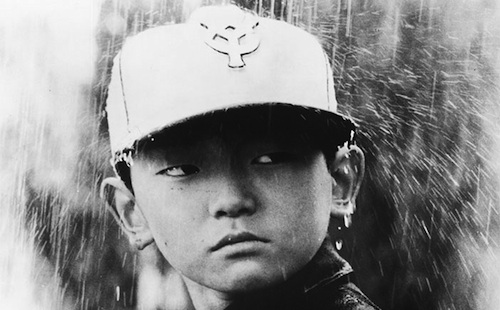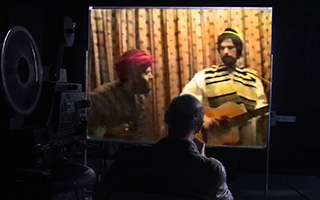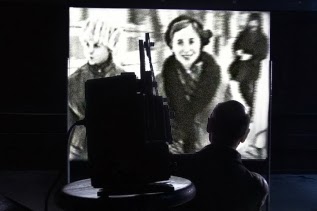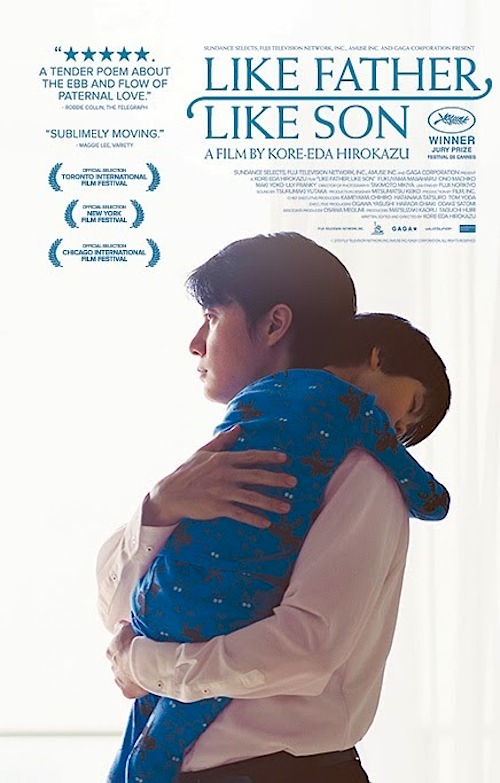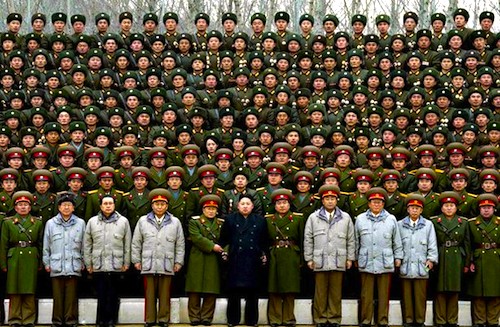By Joe Bendel. Even though filming is not even wrapped on the questionable movie adaptation of Shades of Grey, Hitoshi Matsumoto has already mashed-up the S&M melodrama genre beyond human recognition. From Japan, we have a cautionary, surreal meta-meta postmodern bondage conspiracy tale, while Hollywood is banking on a dude who wears grey ties. How quaint. In the mean time, Matsumoto subverts perversion throughout R100, which screens during the 2014 Sundance Film Festival.
Takafumi Katayama is a drab and depressed working drone who needs to unwind a little. He thinks he has found just the ticket when he joins a mysterious club for submissive men. At first, he gets the release he is seeking when the black-clad women meet him at their scheduled rendezvouses to beat him about and smash his sushi rolls (that’s not a euphemism). However, when they start showing up at his home and work, matters turn a distinctly charcoal shade of grey.
As each dominatrix escalates their encounters, Katayama starts to fear for his life and the safety of his young son and father-in-law. Then things get really weird, but not do bother complaining about logical inconsistencies. The film will provide that commentary itself.
Strictly speaking, there is no nudity or sex in R100, but it is absolutely, positively not for kids. The title is a play on the Japanese motion picture rating system that could be roughly translated as NC-100 for American audiences—and not for nothing. Yet, the film definitely seems to suggest you are begging for trouble if you go out looking for something on the deviant side of life.
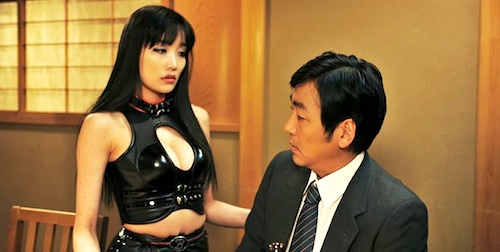
Regardless, R100 careens so defiantly over the top, parsing its symbolic layers and potential take-away teachings becomes a head-spinning endeavor. If any of this film sounds problematic, then you should probably avoid R100 because there is way more of whatever it is that troubles you than we’ve covered so far. On the other hand, cult cinema connoisseurs looking for a new and distinctive head trip will find it here. Imagine Eyes Wide Shut transported to the world of Quentin Dupieux’s Rubber and you will start to get the idea.
Nao Omori perfectly anchors the film as the existentially put-upon Katayama. Just looking at him sort of makes you want to smack him alongside the head. However, he handles the character’s strange evolution with understated power. As his son Arashi, Haruki Nishimoto distinguishes himself as an unusually engaging young actor. Fortunately, his classmates will not be able to see R100 for a while and hopefully he will not have to take much taunting over it in later years.
R100 pushes the envelope, but it never skitters into irredeemably disturbing territory. Indeed, at some point the macro insanity trumps all of the dominant/submissive game-playing. Although decidedly one-sided, there is also some decent fight choreography in the first act for action fans. Recommended for exclusively adventurous viewers (but rather forcefully for them), R100 screens Sunday (1/19) and Tuesday (1/21) in Park City as well as this Monday (1/20) in Sundance Resort as part of this year’s Sundance Film Festival.
LFM GRADE: B+
Posted on January 18th, 2014 at 4:05pm.
